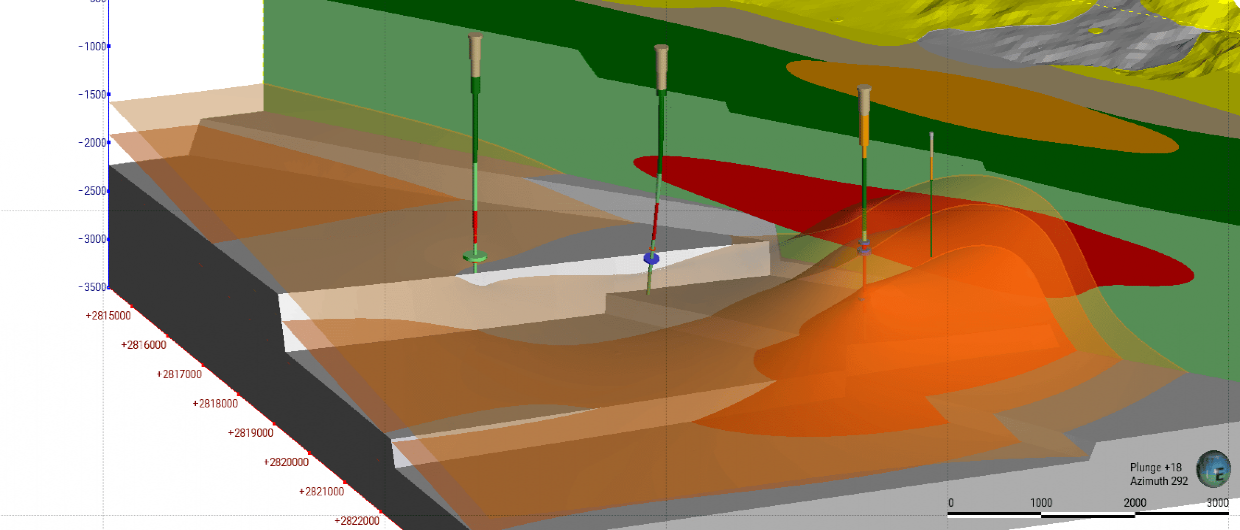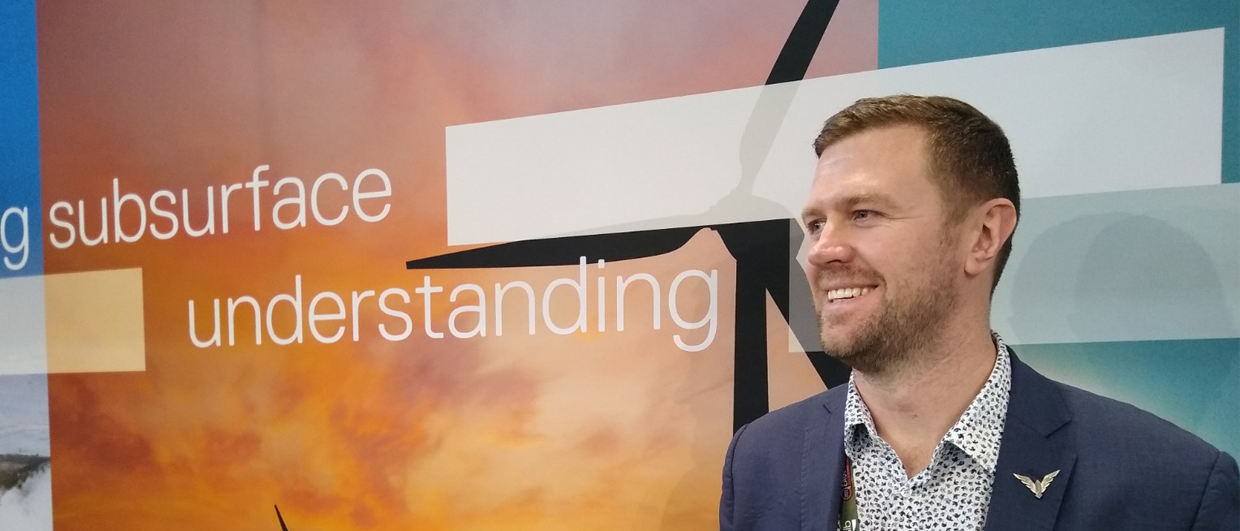The application of geoscience and digital techniques to meet challenging carbon reduction goals in pursuit of cleaner energy forms has never been more critical in enabling growth and delivering energy projects more efficiently. Technological innovation is the key to quicker, more efficient and connected workflows. Seequent’s recently launched Leapfrog Energy’s ability to produce a comprehensive 3D model, using implicit modelling to reduce interpretation bias, is uniquely supporting work across different energy transition applications such as geothermal, wind, CCUS and oil and gas.
One of the key challenges in 3D subsurface characterization is the availability of often very limited sets of “hard” data, usually in the form of well or core samples, combined with a requirement to make inferences on the geology of the areas not tested by the drill bit. Consequently, multiple scenarios often need to be run in subsurface modelling software in order to capture the different geological scenarios that could exist. In turn, this demands powerful computing capabilities such that model run times are kept to workable lengths. One of the ways to speed up the process of faster subsurface modelling is the way interpolation is carried between these points of hard data. This challenge of accelerating the way interpolation is performed is not unique to subsurface modelling software.
It is not a recent thing either. Already in 1995, ARANZ developed the FASTRBFTM algorithm, which stands for Radial Basis Function, to speed up the process traditionally undertaken by dual kriging. One of the first sectors to use this way of interpolation was healthcare, which meant that prosthetics could be designed in a much more efficient way.

In 2004, Seequent adapted the FASTRBFTM algorithm to develop the Leapfrog Mining software, which introduced implicit modelling to subsurface modelling rather than using traditional wireframing or explicit interpretation techniques and digitizing. This increased the speed of geological modelling significantly, and models were also automatically updated as new data was added.
“Subsurface specialists need flexible and fast tools like Leapfrog Energy to understand subsurface conditions and share their knowledge in a way that resonates with technical and non-technical stakeholders. Leapfrog Energy can help companies make critical decisions in days rather than months due to its modern, workflow-based implicit modelling.”
The company also started to explore ways to expand beyond the mining sector and find other industries active in the subsurface space that could benefit from the advanced 3D modelling capability. Along with the civil and environmental sectors, the geothermal industry quickly appeared on the radar. Geothermal had been the poor cousin of the mining and oil and gas industries. 3D modelling was not a core part of the industry, and it did not have a tailor-made solution.
Seequent teamed up with New Zealand geothermal experts utilising the core capabilities of Leapfrog Mining and added industry-specific capabilities such as well planning, pre and post processing for reservoir simulation and geophysical data integration, providing a robust tool for geothermal. In 2012, Leapfrog Geothermal was born and now supports over 50% of the installed geothermal power capacity globally.
The workflow-based modelling approach embedded in Leapfrog today allows users to build gridless geological and properties models that dynamically change when input data related to any part of the model is changed or new information is added.
With a strong foothold in the geothermal sector, the opportunity to again move to other subsurface sectors formed a logical next step. As such, Leapfrog Energy was launched earlier this year, highlighting that Seequent’s geological modelling solutions and its geostatistical capabilities are now being used in offshore wind, carbon capture and storage and oil and gas. Examples of Leapfrog being utilised in Off- shore Wind, sedimentary environments and geothermal are included in the figures.
Implicit modelling
Generated by computer algorithms (in this case the FastRBF) directly from a combination of measured data and user interpretation. Rather than stitching together multiple 2D interpretations and being constrained by grids, implicit modelling utilizes a global solver to generate geometric surfaces and volumes. Boolean logic is used to represent geological concepts (e.g., depositional surfaces, erosional surfaces, intrusions/channels and veins) and these can be augmented with multiple other data sets (interpreted seismic horizons, faults, petrophysical data etc.) to rapidly understand subsurface geometries and combined this with other subsurface data. Probabilistic and Objective: a data-driven approach that learns relationships between variables to discover complex and non-linear relationships that a geoscientist may not.
- Flexible: Can handle sparse and varied data from a plethora of sources. Helpful when data is difficult to obtain and incomplete.
- Time-efficient: Can generate complex shapes and multi-z surfaces allowing geoscientists to spend more time analyzing geology.
- Dynamic and automated: Rapidly update when new data becomes available and iterate alternate hypothetical models with dynamic scaling, reducing geological risk and increasing precision.
- Simple and stable: Account for uncertainty and variability of the data and provides a measure of confidence in the predictions.





